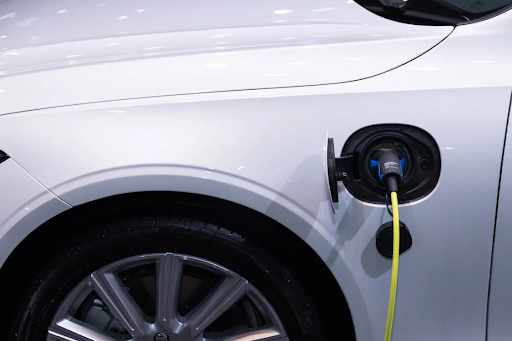
The automotive industry is undergoing a profound transformation, driven by advancements in technology, changing consumer preferences, and global sustainability goals. As we navigate through these exciting times, it’s clear that several key trends are shaping the future of automotive engineering. Among these trends is the incorporation of precision technologies inspired by diverse fields, including military applications like those used in sniper technology. This article explores the latest trends in the automotive industry and highlights how innovations such as the Holly Sniper system are influencing vehicle design and performance.
- Electrification of Vehicles
One of the most significant trends in the automotive industry is the shift towards electrification. Electric vehicles (EVs) are becoming increasingly popular as consumers and governments seek to reduce greenhouse gas emissions and dependence on fossil fuels. Major automakers are investing heavily in electric powertrains, battery technology, and charging infrastructure. This transition is not just about replacing internal combustion engines with electric motors; it involves a complete rethinking of vehicle design and energy management.
- Autonomous Driving
Autonomous driving technology is another major trend reshaping the automotive landscape. Companies like Tesla, Waymo, and others are developing advanced driver-assistance systems (ADAS) that aim to achieve full self-driving capabilities. These systems rely on a combination of sensors, cameras, radar, and machine learning algorithms to navigate and make decisions in real-time. The goal is to enhance safety, reduce traffic congestion, and improve overall driving convenience.
- Connectivity and Smart Features
The integration of connectivity and smart features is transforming vehicles into sophisticated data hubs. Modern cars are equipped with advanced infotainment systems, real-time navigation, and vehicle-to-everything (V2X) communication. These technologies enable vehicles to communicate with each other, traffic infrastructure, and even pedestrians. The result is a more seamless and efficient driving experience, with features like predictive maintenance and over-the-air (OTA) updates enhancing vehicle performance and reliability.
- Sustainability and Green Manufacturing
Sustainability is becoming a core focus in the automotive industry, with companies aiming to reduce their environmental footprint not only through electric vehicles but also through sustainable manufacturing practices. Automakers are exploring the use of recycled materials, energy-efficient production processes, and eco-friendly packaging. The goal is to create vehicles that are not only better for the environment but also align with the growing consumer demand for green products.
- Precision Engineering Inspired by Sniper Technology
One intriguing trend in automotive design is the application of precision engineering principles drawn from other fields, such as sniper technology. The Holly Sniper system, known for its accuracy and advanced targeting capabilities, provides valuable insights into how precision can enhance automotive performance.
The Holly Sniper system incorporates high-precision optics, advanced rangefinding, and ballistic calculations. These technologies ensure that snipers can make precise adjustments and hit targets accurately over long distances. Similarly, the automotive industry is adopting precision technologies to improve vehicle performance, safety, and efficiency.
For instance, the development of high-precision sensors and advanced camera systems in vehicles mirrors the precision optics used in sniper systems. These sensors enable features like adaptive cruise control, lane-keeping assistance, and automatic emergency braking, which rely on accurate data to function effectively.
Moreover, the concept of precision engineering from sniper technology has influenced automotive design in terms of component manufacturing and system integration. Techniques such as CNC machining and laser cutting, which are used to create sniper components with tight tolerances, are also applied in automotive manufacturing. This ensures that every part of a vehicle meets exact specifications, contributing to overall performance and safety.
- Advanced Materials and Lightweight Design
The pursuit of better fuel efficiency and performance has led to a focus on advanced materials and lightweight design in the automotive industry. Materials such as carbon fiber, aluminum, and advanced composites are being used to reduce vehicle weight without compromising strength or safety. This trend aligns with the precision approach seen in sniper technology, where every component must be finely tuned to achieve optimal results.
- Augmented Reality (AR) and Virtual Reality (VR)
Augmented reality (AR) and virtual reality (VR) technologies are making their way into the automotive industry, enhancing both the design and user experience. AR is used for heads-up displays (HUDs) that project important information onto the windshield, while VR is employed in design and prototyping processes to create realistic simulations of vehicles. These technologies help engineers and designers visualize and test new concepts more effectively.
Conclusion
The automotive industry is experiencing a dynamic shift driven by electrification, autonomy, connectivity, sustainability, and precision engineering. Innovations inspired by technologies like the Holly Sniper system are contributing to advancements in vehicle performance, safety, and efficiency. As the industry continues to evolve, the integration of cutting-edge technologies and the pursuit of precision will play a crucial role in shaping the future of automotive engineering. Embracing these trends will not only enhance the driving experience but also contribute to a more sustainable and connected world.









More Stories
Acoustic sensor systems and Fraunhofer measurement technology for in practical testing ͏
OSI Systems Receives $10 Million Order for Cargo and Vehicle Inspection Systems
Mitsubishi Electric Automotive America Launches Guardian Generation 3 Trial with Seeing Machines in North America